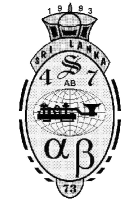40m/30m Quad
Full Size and Rotatable. Mounted on a 60ft crank-up tower + 5ft rotor cage. So the height is adjustable. Fed with Bravo Pro Baluns for each band for quieter operation.
1000+ already viewed!
Article Summary
I was making quads for 20m and above using bamboo and sectioned aluminium tubing few years ago. Had lot of experience with them in terms of performance, mechanical stability, and modelling. This time, with the repeated collapse of my 40m Hex beam, I wanted to try something new. My experience operating the 40m 4el quad at SK0UX years ago, pushed me towards making one at home one day.
Article Highlights
- History of my Quad Designs
- Design and NEC Modelling
- Feeding with Bravo Pro Baluns
- Unpleasant Experiences
- On Air tests

Kamal Edirisinghe
4S7AB / KA5MAL
Author Nov 2017
Having More than 35 years of experience in the Field of Amateur Radio, I have published many articles in prestigious international publications like, QST, CQ-DL, NCJ, Six-News etc.. Here in this web site, these write-ups are intended to give you knowledge about my designs and projects related to the hobby. The articles about foreign HAM activities are intended to share my experience.
- Fully Solar Powered Radio Station
- SO2R and Multi-Multi Compatible
- Operate on All Bands/Modes/SATS
- DXCC #61,271
- IOTA AS-003, CQ-22, ITU-41
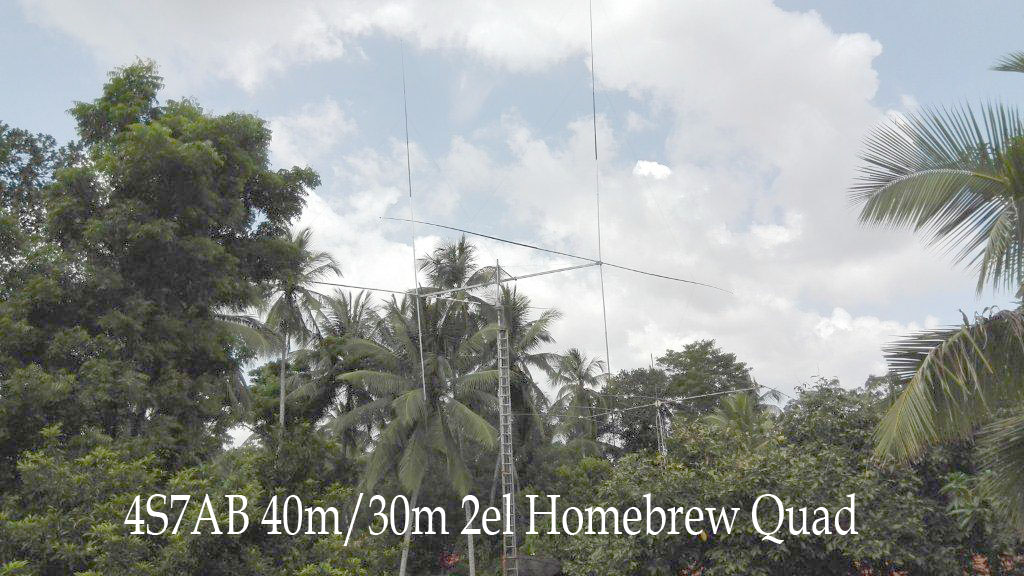
I was able to model the proposed 40m/30m interlaced quad in NEC very well and the modelling iterations took nearly few weeks. I wanted to include every metal piece into the model including the tower, boom, bracket and the spreader structures. That was a very time consuming one but it is well worth the effort. My university Engineering Mathematics knowledge came into play here and was quite useful in proper modeling. And antenna modelling is addictive I must admit.
Many people look at the quad in different ways. Their asking parameters are different. Some want pure gain, others f/b etc.. In my case, being located in an island and considering my operating patterns, I wanted more gain and lower takeoff from my quad. My modeling was always driven towards those goals. SWR was not a major concern since I knew how to match it.
Putting the bits and pieces together, I was able to make the quad on the tower in about 2 months time. Raising it to the top was another challange. Few times it bent some elements and I had to re-design the strategy to put it up. Finally in 2016 November time, I was able to put it up. I am not going to iterate the hardships of impedance matching (some call tuning) here. Once it was up on the tower, I was able to work short path to EU, JA quite easily on 40m and 30m alike. I was able to cross the south pole and check into the East Coast US net on 7163 in the evenings (here). While the low band season went well with the quad, somewhere in March 2017, a heavy wind storm came and bent one element from the attachment point. That detuned the mechanical equilibrium of the whole reflector and 2 more elements were also bent from the same place in 3 days.
I had to take it down again and do the necessary repair work. It was put back into operation in Aug 2017. Until this time Nov 2017, it survives well enough.
The ability of the quad to work at low heights is a plus factor at lower bands in my opinion. (whatever the self appointed antenna guru’s say otherwise). Someone who has built a quad knows how well it pays you back in terms of satisfaction. It is frightening to watch it swinging like an elephant in the mild wind. In the heavy wind, you better close your eyes and pray for the best.
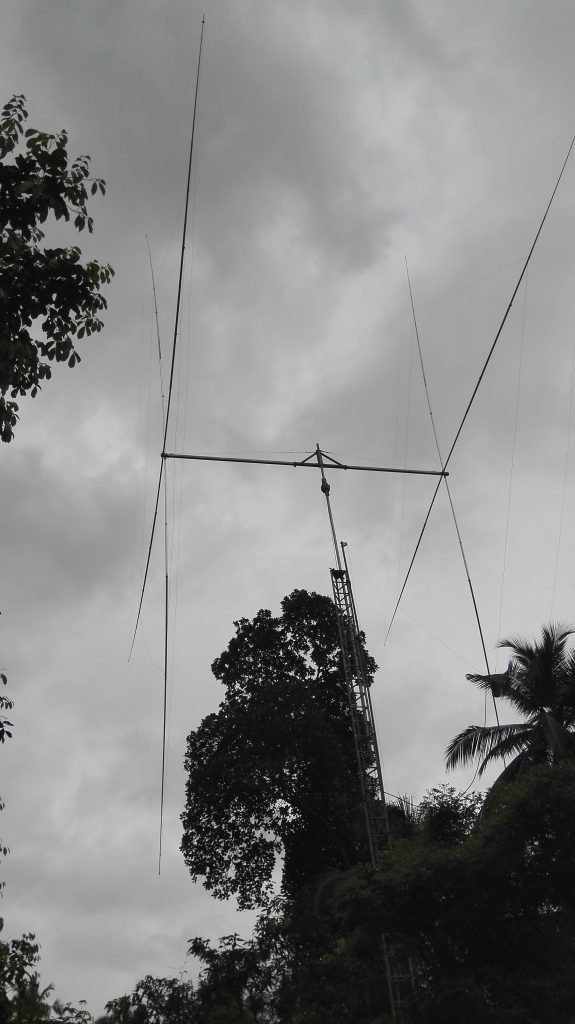
This is how it looks like on a cloudy day. The rotor is a CDE. You can also see the gin pole permanently installed on the tower.
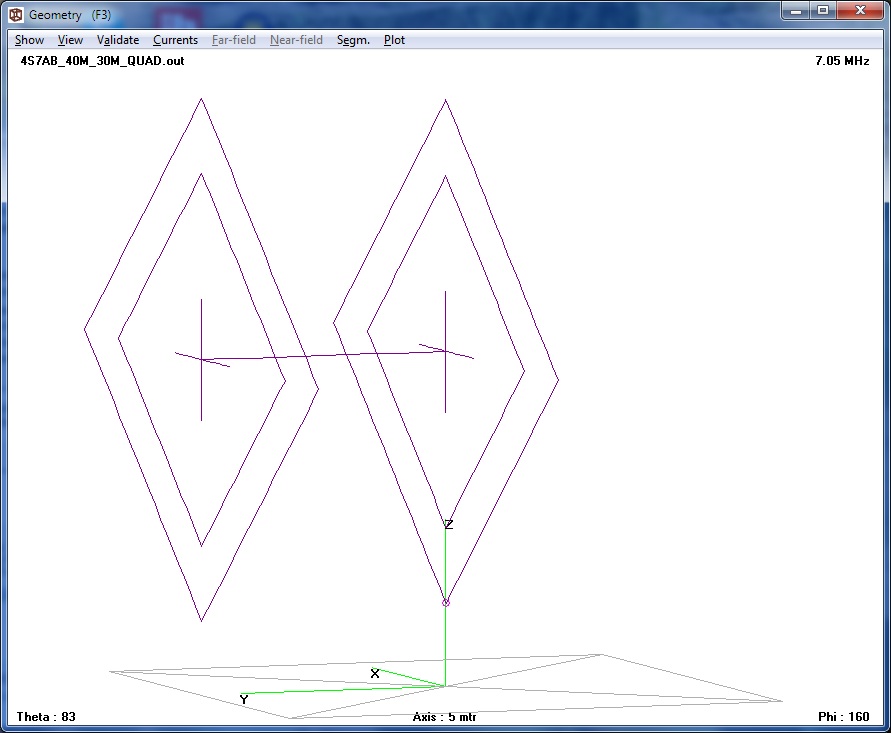
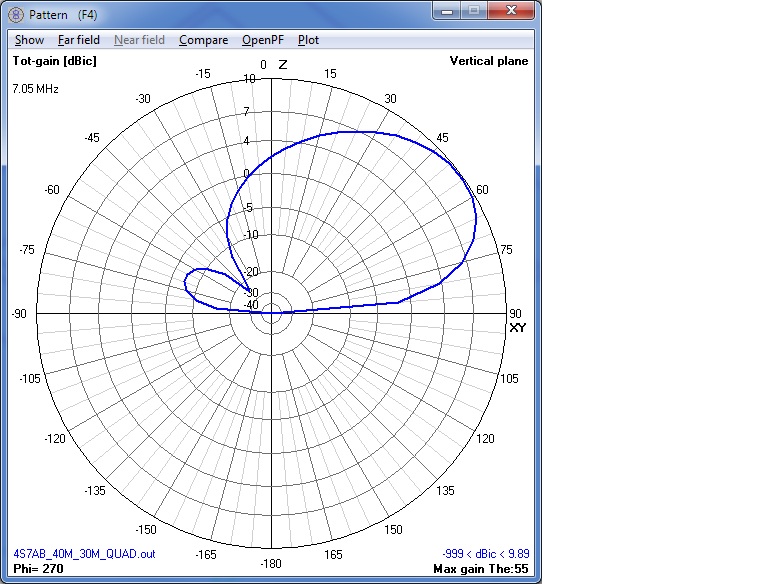
The seperation of the elements is 20ft. This is bit too close for 40m but I have modelled the antenna to get a sufficient f/b. The 40m reflector is 5% larger than the driven in both the bands. The lengths were trimmed to get the fine tuning of the SWR, therefore I cannot give the exact dimentions here. If you are not good in NEC modelling, then I recommend you duplicating something in the ARRL Antenna handbook.
Feeding
I feed the 30m with a RF choke wound using RG213 in a 4″ PVC tube. 40m is fed using a surplus Hygain 1:1 balun. SWR on 40m is 1:1 on the CW side. It’s about 1.5:1 on 30m.
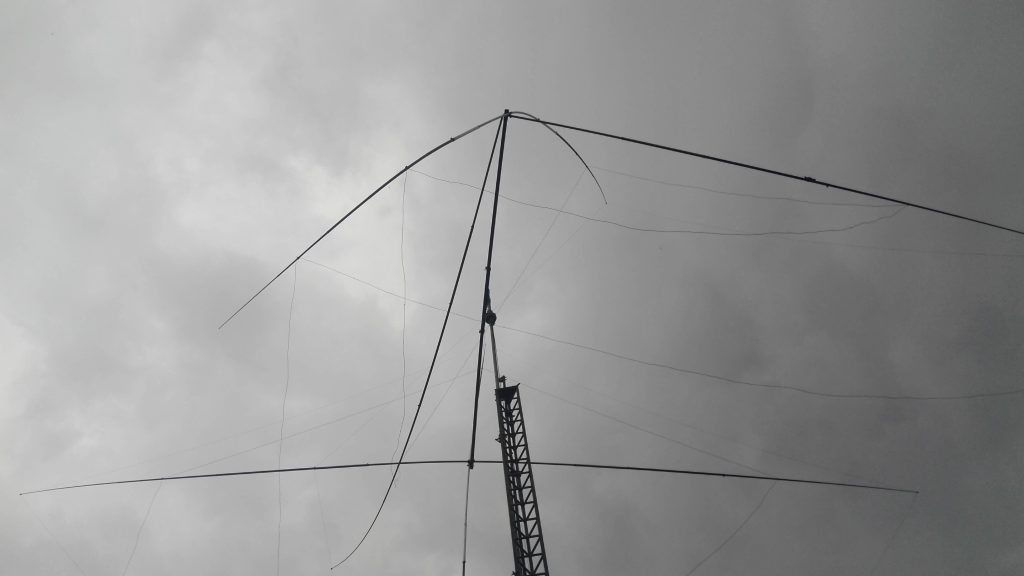
Very unpleasant secene when the quad got damaged due to a wind storm. But I post it here in order to show you the realities. Since the wind catching area is very large, these things can happen.
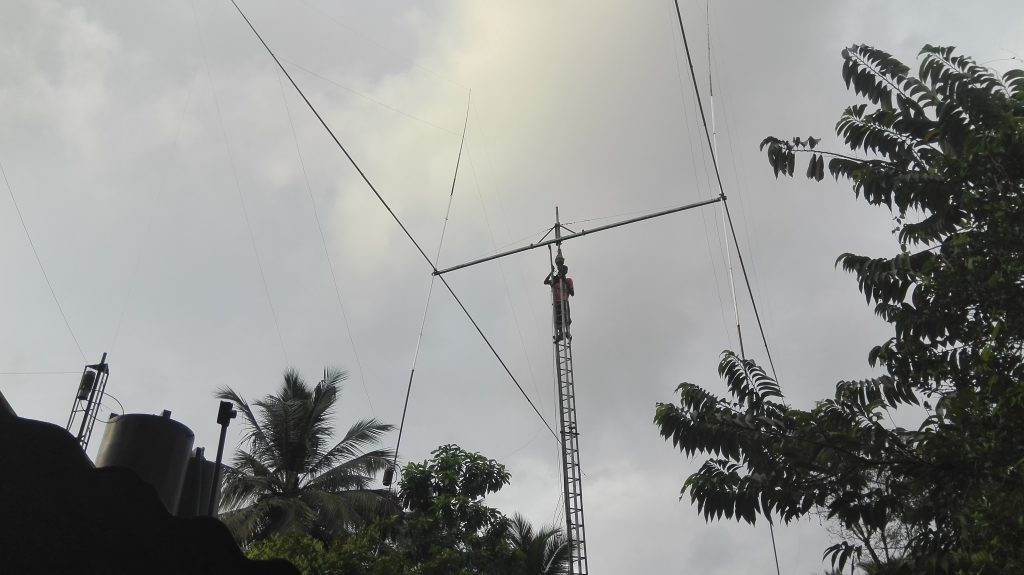
4S7AB on the tower doing adjustments. This work needs a lot of skill and patience. Sometimes, it take hours to tighten one single nut/bolt and that’s it for the day !.
